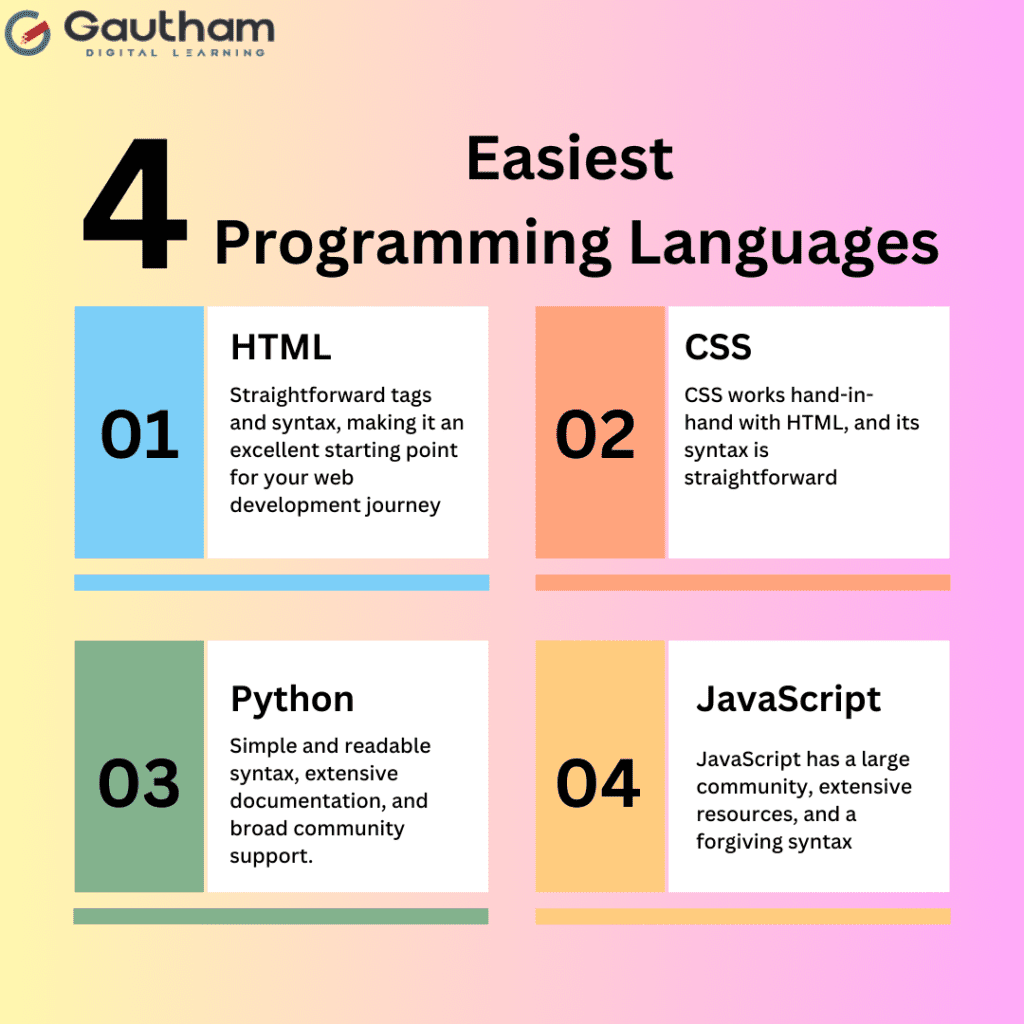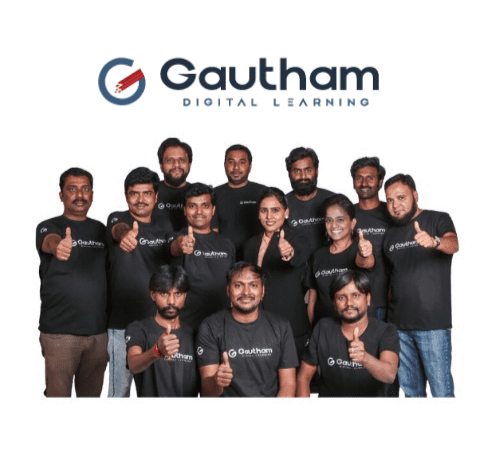Python Full stack Developer Course
Are you looking to embark on a journey into the dynamic world of full-stack development with Python? Look no further! Gautham Digital Learning offers comprehensive Python Full stack developer course.
Python Full stack Developer Course
Are you looking to embark on a journey into the dynamic world of full-stack development with Python? Look no further! Gautham Digital Learning offers comprehensive Python full-stack training in Hyderabad.
Python Training Highlights
What is Full-Stack Development?
Python full stack developer role is to build web applications that involve both the front-end and back-end development and also have database knowledge.
Front End
Front end development refers to the practice of creating the visual elements of a website or web application that users interact with directly. It involves designing and implementing the user interface, ensuring that it is both visually appealing and functional. Front-end developers are responsible for bringing web designs to life, using a combination of programming languages, frameworks, and tools.
Back End
Back end development, also known as server-side development, refers to the creation and management of the server-side logic, databases, and applications that power the functionality and data processing of websites or web applications. While front end development focuses on the user interface that users interact with directly, back end development handles the behind-the-scenes processes that enable the front end to function effectively.
SQL
In our journey to becoming full-stack Python developers, we'll now dive into the world of SQL, a powerful language for interacting with databases. SQL is essential for building dynamic web applications. It allows us to not only store and retrieve data but also to analyse, manipulate, and search for information efficiently. By mastering SQL in conjunction with Python's data handling capabilities, we'll unlock the ability to create robust and data-driven web applications.
About Python Full Stack Developer Course
Back End Development
Core Python: Core Python refers to the fundamental aspects of the Python programming language. It includes basic syntax, data types, control structures, and built-in functions. Core Python serves as the foundation for learning advanced Python concepts and building various applications. Understanding core Python is essential for mastering Python programming.
Advanced Python: Advanced Python encompasses more complex topics such as decorators, generators, context managers, and metaclasses. It also involves advanced data structures and algorithms. Advanced Python techniques are used in software development, data analysis, machine learning, web development, and automation. Mastering advanced Python opens up opportunities for creating efficient and scalable solutions.
PANDAS: Pandas is a powerful Python library for data manipulation and analysis. It provides data structures like Series and DataFrame, along with functions for data cleaning, transformation, and exploration. Pandas offers intuitive data manipulation tools for handling missing data, merging and joining datasets, reshaping data, and performing statistical operations. It simplifies complex data tasks and accelerates data analysis workflows.
Numpy: Numpy is a fundamental Python library for numerical computing. It provides support for multidimensional arrays, mathematical functions, linear algebra operations, and random number generation. Numpy offers efficient array operations, broadcasting, indexing, slicing, and element-wise computations. It significantly enhances the performance of numerical computations in Python.
DJANGO: Django is a high-level Python web framework for building web applications quickly and efficiently. It follows the MVC (Model-View-Controller) architectural pattern and emphasizes DRY (Don’t Repeat Yourself) principles. Django provides a robust set of features including an ORM (Object-Relational Mapping) for database interaction, URL routing, template engine, authentication, admin interface, and security features.
Front End Development
HTML: HTML (Hypertext Markup Language) is the standard markup language for creating and structuring web pages. It provides a framework for defining the structure and content of web documents using tags and attributes. HTML forms the backbone of web development by defining the structure of web pages. It enables the creation of semantic and accessible web content, making it crucial for building modern websites and applications.
CSS: CSS (Cascading Style Sheets) is a style sheet language used for describing the presentation and appearance of HTML documents. It allows developers to control the layout, design, and visual aspects of web pages. CSS plays a vital role in web design by providing styling capabilities such as colors, fonts, spacing, and layout. It enhances the user experience and aesthetics of websites, making them visually appealing and user-friendly.
Java Script: JavaScript is a high-level, interpreted programming language used for adding interactivity and dynamic behavior to web pages. It runs client-side in web browsers and enables interaction with HTML and CSS. JavaScript supports features like variables, data types, functions, control structures, DOM manipulation, event handling, and asynchronous programming. It is versatile and can be used for both front-end and back-end development.
ReactJS: ReactJS is a JavaScript library for building user interfaces, developed by Facebook. It enables the creation of dynamic and interactive web applications using reusable UI components. ReactJS utilizes a component-based architecture, virtual DOM (Document Object Model), and one-way data flow to efficiently manage UI state and update the DOM. It offers JSX (JavaScript XML) syntax for writing HTML-like code within JavaScript.
SQL
SQL (Structured Query Language) is a domain-specific language used for managing and manipulating relational databases. It allows users to query data, define schema, insert, update, and delete records, and perform various database operations. SQL is essential for working with databases in software development, data analysis, and business intelligence. It provides a standardized way to interact with relational databases and retrieve information efficiently.
Course Curriculum
Back End Development
- History of Python
- Python Environment
- Popular IDE’s of Python
- Python Basic Programming Fundamentals
- Control Statements
- Iterative Statements / Loops
- Python Collections
- Functions
- Modules and Packages
- User Define Modules / Packages
- I/O File Handling
- Serialization / Pickle
- OOP’s Introduction
- Constructor and Types
- Polymorphism
- Inheritance
- Exception Handling
- Multi Threading
- GUI Programming with Tkinter
- Database Connectivity (PDBC)
- Regular Expressions
- Iterators / Generators / Decorators
- Data Science Modules like Numpy, Pandas, Matplotlib & Openpyxl
Sample Project - 1
Sample Project - 2
Sample Project - 3
Database Management System
- DDL: Data Definiton Language
- Data Manupulation Language
- Data Query Language
- Transaction Control Language
- Data Control Language
- Views
- Functions
- Procedures
- Joins
Front End Development
- Introduction to Web Programming
- HTML-5
- Cascading Style Sheets (CSS-3)
- Java Script Basics
- React JS Basics
Web Development
- Introduction of Web Framework
- MVT Pattern
- Django – Views (Business Logic Layer)
- Django- URL Mapping
- Django- Templates (Presentation Layer)
- Django Static Files
- Django Modules (Database Layer)
- Django Form Processing
- Django – Sessions and Cookies
- Django Object Realtional Mapper (ORM)
- Django Object Realtional Mapper (ORM)
- Flask Framework Examples
Project-1 Signup and Login Page with Validation
Project-2: Web App with CRUD
Project-3: E-Commerce App
Project-4: Reservation-App
Why Python is the Easiest Languages to Learn?

Minimalistic Code: Python’s minimalist syntax allows developers to focus on solving problems rather than wrestling with complex syntax rules. With fewer symbols and syntactical requirements, Python code is concise and easy to understand, even for those new to programming.
Easy-to-understand Syntax: The intuitive nature of Python’s syntax resembles pseudo-code, making it accessible to individuals without prior programming experience. Its readability stems from the use of plain English keywords and indentation for code structure, facilitating comprehension and reducing the likelihood of syntax errors.
Automation and Scripting: Python’s scripting capabilities enable the automation of repetitive tasks, ranging from file manipulation to system administration. By leveraging libraries like os and subprocess, developers can create scripts to streamline workflows and enhance productivity.
Data Analysis and Visualization: Python’s rich ecosystem of data science libraries, including NumPy, pandas, and Matplotlib, facilitates data manipulation, analysis, and visualization. Its expressive syntax and powerful tools make it the go-to language for exploring and interpreting data.
Practical and Real-world Applications: Python’s ease of learning and versatility translate into numerous practical applications across industries. From web development and data analysis to automation and scripting, Python powers a wide range of projects and initiatives.
For more details and demo links please call +91 9014529858 or WhatsApp us










Frequently Asked Questions
A Full Stack Python Developer is a software professional who specializes in developing applications using the Python programming language. They are responsible for designing, coding, testing, and deploying software solutions
HTML, CSS, Java Script and ReactJS
Core Python, Advanced Python, Pandas, Numphy, and Django
Yes, we will cover SQL.
Individuals interested in web development, software engineering, or expanding their programming skill set can benefit from a Python full stack course.
The duration of a Python full stack course is five months. In this five months duration we will cover both front end, back end and SQL.
Python is a powerful programming language that can be used to create full-stack web applications.
Full stack Python development can be a very rewarding career path, but it can also be quite challenging.
Our Courses
A Java full stack developer crafts both the interactive elements and the data processing engine of a web application using Java.
ServiceNow training equips you with the skills to manage IT service requests, incidents, and changes using the ServiceNow platform.
AWS DevOps integrates various aspects of software development and operations, aiming to shorten development life cycle.
Linux administration training teaches you how to install, configure, and maintain Linux operating system.
Salesforce training empowers you with the skills needed to become proficient in the world's leading CRM system.
Mulesoft provides software that connects applications, data, and devices that automate tasks and integrate various systems.
Digital marketing uses search engines and social media channels to connect with customers and promote products or services.















